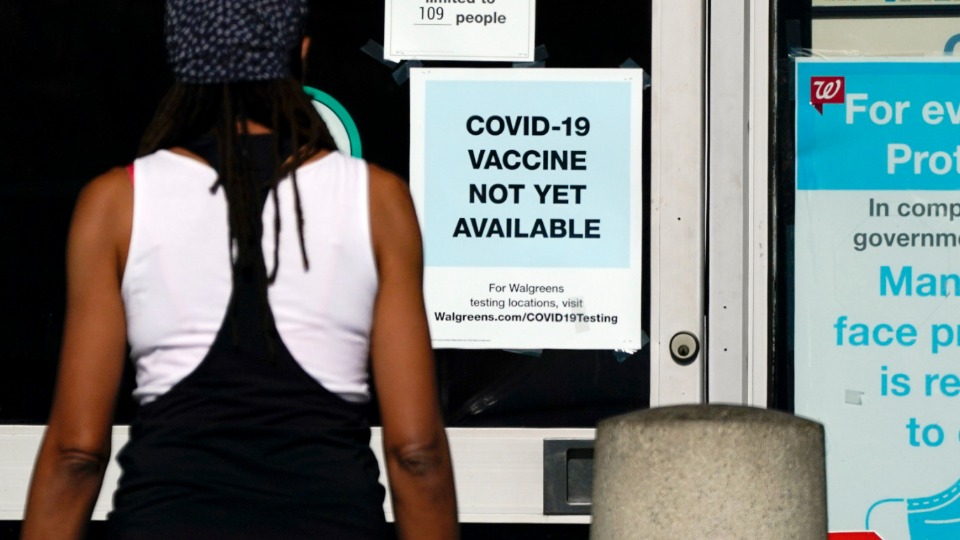
The year 2020 ended with December as the deadliest and most infectious month of the entire coronavirus pandemic, with the U.S. surpassing 20 million confirmed cases and almost certainly far more.
Over 77,000 people died of COVID-19 in the United States in December, with at least 6.4 million new infections, complicated by the emergence of a mutant virus and a vaccination process that is proceeding at a snail’s pace. The vaccination process is so bad that even many developing nations are far ahead of the U.S. in the rate at which their populations are being vaccinated.
As Americans face this grim news, even major media, including NBC, have been reporting that in China and other countries life is back to normal for huge majorities of the people in those countries.
Back in April, it was widely believed that things in America could not get much worse. People watched on TV in horror as the sick and dying filled New York hospitals and as refrigerated morgues pulled up in front of them to take away the dead. The December figures of 77,000 dead, however, surpass the 58,000 killed by the virus during April, which is now officially the second deadliest month of the pandemic in the United States.
On the last day of the year alone, Dec. 31, there were at least 227,651 new cases reported, and 3,451 people who died.
The virus has now officially killed 346,000 people in the U.S. with the real figure likely much higher.
At least four cases of a new mutant variant of the virus have been reported in Colorado, California, and Florida. Dr. Mercedes Carnethon, vice-chair of preventive medicine at Northwestern University, said experts are “fairly confident this variant is now everywhere.”
The mutant virus “appears to affect more adults under age 20,” Carnethon said on MSNBC. “And I think the reason why that’s particularly critical is that this younger adult population is circulating more. They are performing some of the essential roles such as delivery work, factory work, and they’re just generally out there in the population, and that population isn’t in line to be vaccinated soon.”
At this point, it is certain that these highly vulnerable young people will not be vaccinated in the near future, since only about 2.8 million people have received vaccines since the start of the vaccination campaign in mid-December. According to the mid-December promises of the Trump administration, some 20 million or more were supposed to have been vaccinated by the end of the year.
States say it is the lack of staff and funds that have hobbled them. Even more of a problem is that the private health care system in the U.S. lacks the infrastructure to do what is being done in both advanced and developing countries around the world. Countries with single payer and national health care systems everywhere are outpacing the U.S., which is depending on outfits like CVS and Walgreens to do what a good public health care system would do much more efficiently.
In 1947, the well-equipped public health care system in New York City vaccinated most of the entire population of that huge metropolis against smallpox in less than six weeks. That system has long since been dismantled.
Even with vaccines becoming available, they are of no use without an infrastructure to get them to the people. Additional surges are expected in the weeks after Christmas and the new year holidays.
The crisis is sharpening all across the country. In California, hospitalizations have gone up more than eightfold in two months and nearly tenfold in Los Angeles County. As hospitals are swamped and intensive care units have no more beds for COVID-19 patients, makeshift wards are being set up in tents, arenas, and classrooms to make up for the lack of space in overwhelmed hospitals.
On Thursday, the total number of California deaths surpassed 25,000, making it the third state to cross that milestone, along with New York and Texas.
“Most heartbreaking is that if we had done a better job of reducing transmission of the virus, many of these deaths would not have happened,” said Barbara Ferrer, Los Angeles County’s public health director, who has pleaded with people not to get together and worsen the spread.
President-elect Joe Biden said this week that an entirely new and major effort will be undertaken under his presidency, including invocation of the Defense Production Act, to help build the necessary infrastructure for achieving 100 million vaccinations in the first 100 days of his administration.
AP contributed to this article.












Comments